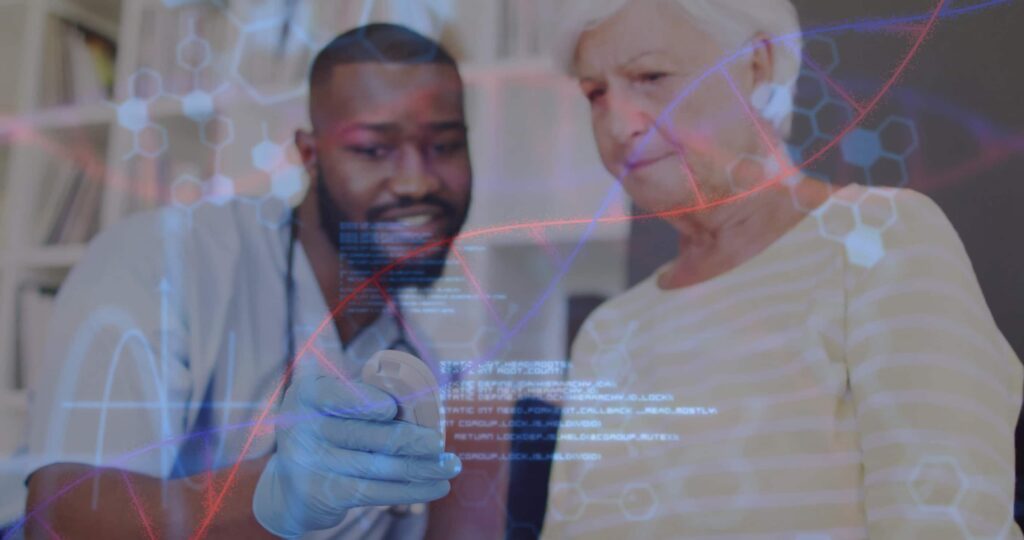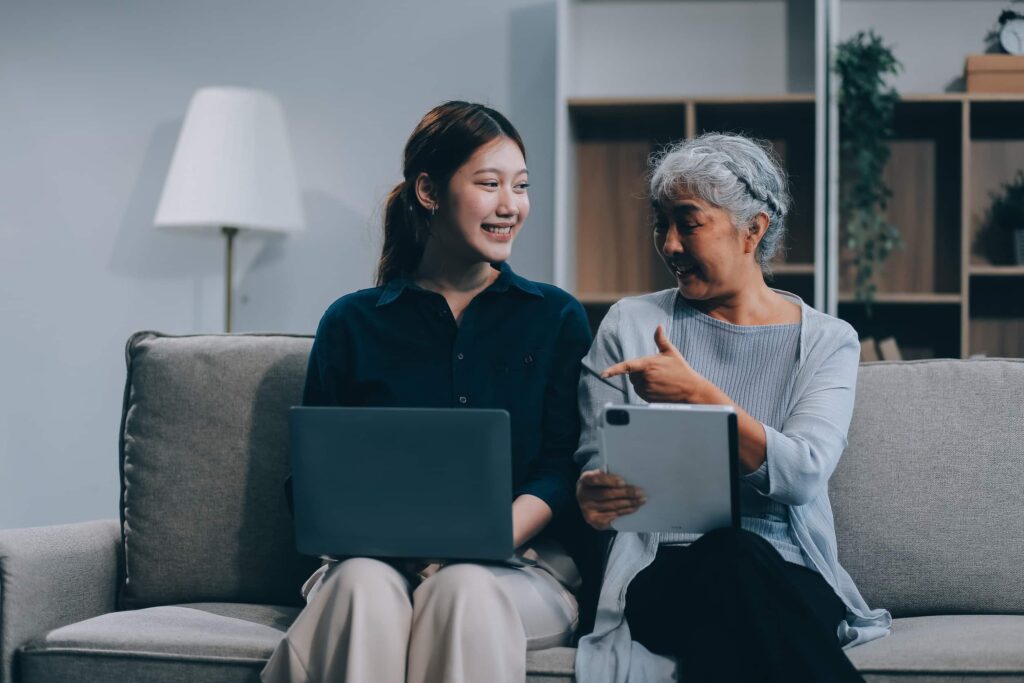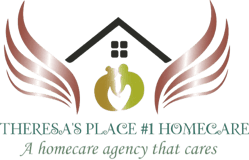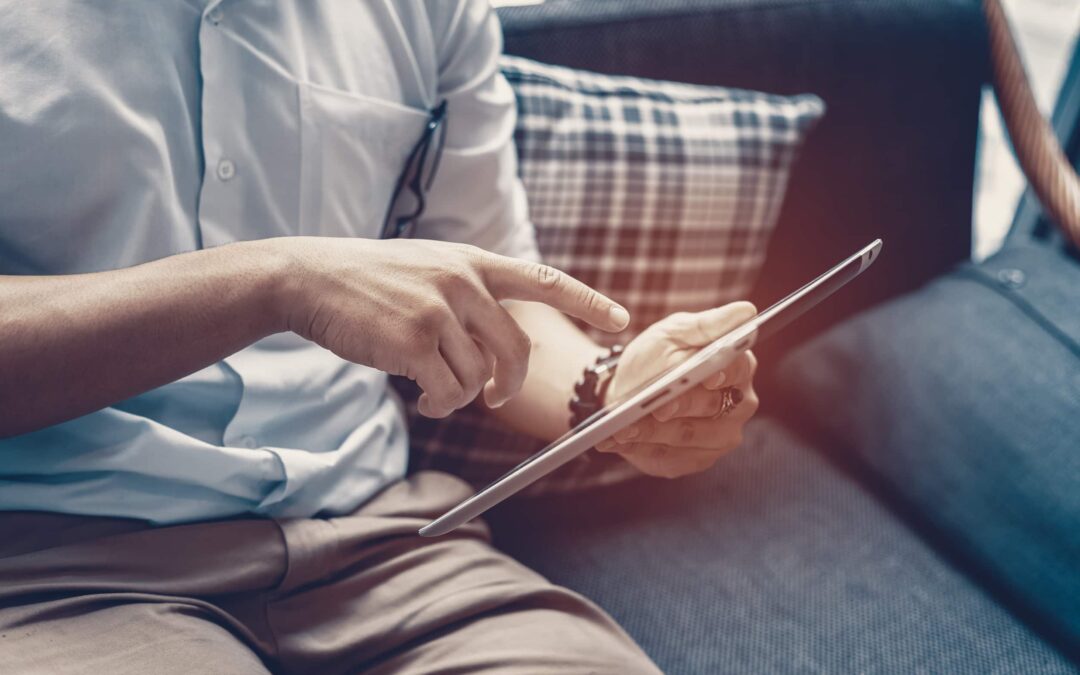You’re witnessing a transformation in home care as technology reshapes its landscape. From smart devices that monitor health to AI solutions offering personalized care, the integration of tech is undeniable. Telemedicine reduces the need for physical visits, while robotics assist with daily tasks. Wearables track essential signs, ensuring early intervention. Yet, with these advancements, data security remains paramount. How do these innovations redefine the care you or your loved ones receive?
Smart Home Devices for Health Monitoring
Even as technology becomes increasingly integrated into our daily lives, smart home devices for health monitoring are transforming the way we approach personal well-being and healthcare management. You’re now able to seamlessly monitor essential signs with smart sensors that capture real-time data. These devices analyze this data, providing thorough health analytics that help you make informed decisions about your health. Imagine tracking your heart rate, sleep patterns, and even blood oxygen levels from the comfort of your home. It’s about precision and convenience. By leveraging such advanced technologies, you can detect potential health issues early and adjust your lifestyle accordingly. This transformation empowers you to maintain better control over your health, reducing dependency on traditional healthcare visits.
AI-Driven Personalized Care Solutions
You’re at the forefront of revolutionizing home care with AI-driven personalized care solutions. By integrating adaptive health monitoring systems, you can tailor care plans to individual needs, enhancing accuracy and efficiency. Implementing predictive care algorithms allows you to anticipate health issues before they arise, offering proactive interventions that greatly improve patient outcomes.
Adaptive Health Monitoring Systems
While the landscape of home care continues to evolve, adaptive health monitoring systems stand out as a significant advancement in AI-driven personalized care solutions. These systems offer adaptive technology benefits by tailoring health management to individual needs. They seamlessly integrate health data from various sources, providing a thorough view of a patient’s condition. You can track essential signs, activity levels, and medication adherence in real-time, allowing for immediate interventions when necessary. This integration guarantees that caregivers and medical professionals can make informed decisions swiftly. By leveraging AI, these systems learn from patterns in health data, offering insights into potential health risks. This personalized approach not only enhances patient outcomes but also optimizes resource allocation, making home care more efficient and effective.
Predictive Care Algorithms Implementation
Building upon the capabilities of adaptive health monitoring systems, predictive care algorithms elevate AI-driven personalized care solutions to new heights. By harnessing predictive analytics, these algorithms analyze vast datasets in real-time, identifying patterns that might elude human observation. This enables you to anticipate health issues before they escalate, ensuring proactive interventions and enhancing care optimization.
Imagine a system that not only tracks essential signs but predicts potential health declines by analyzing trends over time. That’s the power of AI-driven solutions. With predictive care algorithms, you can tailor treatment plans to individual needs, avoiding unnecessary hospital visits and reducing healthcare costs. These algorithms continuously learn and adapt, ensuring that your loved ones receive the most personalized, efficient, and effective care possible.
Telemedicine and Remote Care Services

With telemedicine, you can connect with doctors virtually, making healthcare more accessible and convenient than ever before. By monitoring health remotely through advanced sensors and apps, you gain real-time insights into patient conditions, which enhances proactive care management. This technology also plays a vital role in increasing access equity, ensuring that underserved communities receive the attention they need without geographical barriers.
Virtual Doctor Consultations
As technology continues to reshape healthcare, virtual doctor consultations are becoming an integral part of home care. They offer numerous benefits, such as convenience, cost savings, and accessibility. However, remote diagnosis challenges remain, requiring careful consideration. Here’s an analytical breakdown:
- Virtual Consultations Benefits: You save time by avoiding travel, reduce healthcare costs, and access specialists regardless of location. These consultations are especially beneficial for routine check-ups and follow-up visits.
- Remote Diagnosis Challenges: Accurately diagnosing conditions without physical exams can be tricky. Reliable technology and clear communication are essential to overcoming these hurdles.
- Tech-Savvy Solutions: Leveraging high-quality video platforms and secure data transmission guarantees effective consultations, enhancing patient trust and safety.
Monitoring Health Remotely
While technology evolves at a rapid pace, monitoring health remotely through telemedicine and remote care services is revolutionizing home care. You can track essential signs using remote patient monitoring, guaranteeing timely interventions. Health data analytics provide insights into patterns, allowing for personalized care plans. This approach enhances efficiency and promotes proactive health management.
Consider the following table showcasing the emotional impact of remote monitoring:
| Emotion | Impact |
| Relief | Continuous monitoring reduces anxiety. |
| Empowerment | Patients feel in control of their health data. |
| Connection | Strengthens bonds with healthcare providers. |
These technologies not only improve patient outcomes but also offer peace of mind to caregivers. By leveraging these advancements, you can guarantee thorough care without leaving home, transforming the way health is managed in the modern age.
Increasing Access Equity
Although technology can sometimes create barriers, telemedicine and remote care services are effectively breaking down these walls to increase access equity in healthcare. By utilizing these tools, you’re bridging gaps caused by accessibility barriers and fostering social inclusion. Here’s how:
- Affordable Care: Remote services reduce costs by eliminating travel and offering more community resources, guaranteeing widespread access to equitable services.
- Telehealth Education: By enhancing digital literacy and providing technology training, you empower individuals to utilize telemedicine effectively. This encourages informed decision-making and better health outcomes.
- Social Inclusion: As you integrate telemedicine, you create opportunities for those isolated by physical or socio-economic constraints to receive care. This promotes a sense of belonging and guarantees everyone has a voice in their healthcare journey.
Robotics and Automation in Home Assistance
Even if you’re not a tech enthusiast, you can’t ignore the transformative impact robotics and automation are having on home assistance. Robotic caregivers offer unprecedented support, simplifying daily tasks and providing companionship. Automation benefits extend beyond convenience, enhancing efficiency and safety for those in need. Imagine a robot assisting with meal preparation or medication reminders, reducing human error.
| Feature | Benefit |
| Robotic caregivers | Enhanced companionship |
| Automation of tasks | Increased efficiency |
| Error reduction | Improved safety |
| Task simplification | Greater independence |
This technology isn’t just a novelty; it’s a game-changer, especially for aging populations. By streamlining routine activities, these innovations allow caregivers to focus on personalized care, ensuring a higher quality of life. Embrace this tech-savvy future, it’s here to stay.
Wearable Technology for Health and Safety
When it comes to wearable technology, its role in enhancing health and safety cannot be overstated. These devices are revolutionizing how you monitor well-being and guarantee personal security. Wearable devices integrate seamlessly into daily routines, providing real-time data that’s essential for health tracking. Here’s how they’re making a difference:
Wearable technology revolutionizes well-being monitoring and personal security, offering seamless integration and real-time health data.
- Continuous Monitoring: Wearables track critical signs like heart rate and oxygen levels, enabling proactive health management.
- Emergency Alerts: Devices can detect falls or irregular heartbeats, automatically notifying emergency contacts, assuring timely intervention.
- Data Integration: Seamlessly connecting with your smartphone or health apps, they provide an extensive view of your health trends over time.
Virtual Reality for Elderly Engagement
Virtual reality (VR) is transforming how the elderly engage with the world, offering immersive experiences that enhance cognitive and social well-being. By integrating VR into home care, you can provide seniors with opportunities for immersive engagement that stimulate memory and reduce feelings of isolation. Imagine guiding an elderly person through a virtual tour of the Louvre or facilitating a family reunion in a simulated environment. These virtual reality experiences aren’t just entertaining; they foster emotional connections and mental stimulation.
The tech-savvy approach allows you to tailor VR content to individual interests, guaranteeing a personalized interaction. As you explore these options, consider the equipment’s usability and comfort. It’s essential to guarantee that VR devices are easy for seniors to operate, maximizing their benefits.
Data Security and Privacy in Home Care
How do you guarantee the security and privacy of sensitive data in home care environments? Start by implementing data encryption to protect digital identity and patient information. Encryption guarantees data remains unreadable without the correct decryption key. Next, adhere to privacy regulations like GDPR or HIPAA, which provide a framework for protecting personal health information. Finally, enhance cybersecurity measures to prevent unauthorized access. These could include firewalls, intrusion detection systems, and regular security audits.
Here’s a concise strategy:
- Data Encryption: Encrypt all sensitive information to maintain confidentiality.
- Privacy Regulations Compliance: Certify systems comply with relevant laws to safeguard patient data.
- Cybersecurity Measures: Implement robust security protocols and obtain patient consent for data use.
The Role of Mobile Apps in Care Management

In today’s digital age, mobile apps have fundamentally transformed care management by streamlining processes and enhancing patient engagement. When you use these apps, seamless app integration guarantees that various healthcare systems communicate efficiently, reducing administrative burdens. The result is a cohesive platform where medical records, appointment scheduling, and medication reminders are at your fingertips.
User experience plays an essential role in this transformation. You’ll find that intuitive interfaces make navigation simple, allowing both caregivers and patients to focus on what truly matters: health outcomes. These apps provide real-time updates, facilitating better communication between you and your healthcare team. By leveraging data analytics, they offer personalized insights, improving decision-making and fostering proactive care. The future of home care is certainly app-driven.
Frequently Asked Questions
How Can Technology Improve Mental Health Support in Home Care?
You can improve mental health support by utilizing telehealth services and virtual therapy. These technologies offer real-time access to professionals, personalized treatment plans, and convenience, enhancing accessibility and reducing barriers for individuals requiring home-based mental health care.
What Are the Cost Implications of Adopting New Home Care Technologies?
When you consider new home care technologies, a detailed cost benefit analysis is essential. You’ll assess initial costs against long-term savings and potential investment return, ensuring financial sustainability while enhancing service quality and efficiency.
How Do Cultural Differences Affect the Adoption of Technology in Home Care?
You’re analyzing cultural attitudes and their influence on technology acceptance. Different cultures have unique perspectives on technology’s role in caregiving, affecting adoption rates. Consider how trust, privacy concerns, and family dynamics vary across cultural contexts.
What Training Is Required for Caregivers to Effectively Use New Technologies?
You need technology training and caregiver education to effectively use new technologies. Focus on understanding software interfaces, troubleshooting, and data management. Prioritize hands-on workshops and online courses to stay updated and enhance your tech-savvy caregiving skills.
How Can Technology Facilitate Better Communication Between Caregivers and Family Members?
You can enhance communication by using video conferencing for real-time updates and mobile applications for instant messaging and alerts. These tools allow you to share care plans and monitor health metrics efficiently, ensuring everyone stays informed.
Conclusion
You’ve seen how technology is reshaping home care, offering smarter, more personalized solutions. With AI-driven care plans, wearable tech, and telemedicine, you’re empowered to monitor health seamlessly and efficiently. Robotics and automation ease daily tasks, while virtual reality keeps the elderly engaged. Significantly, robust data security guarantees your trust in these innovations. Theresa’s Place Home Care leverages these cutting-edge technologies to provide exceptional, personalized care, ensuring peace of mind for families. By embracing these advancements, you’re not just enhancing care; you’re redefining it for a future that’s more accessible and secure.

